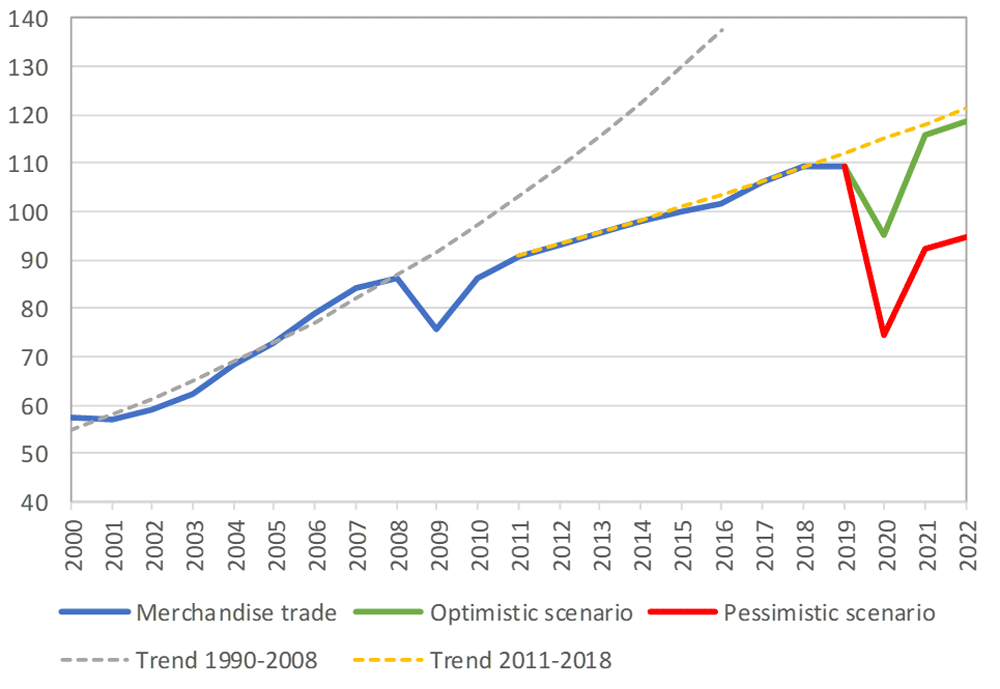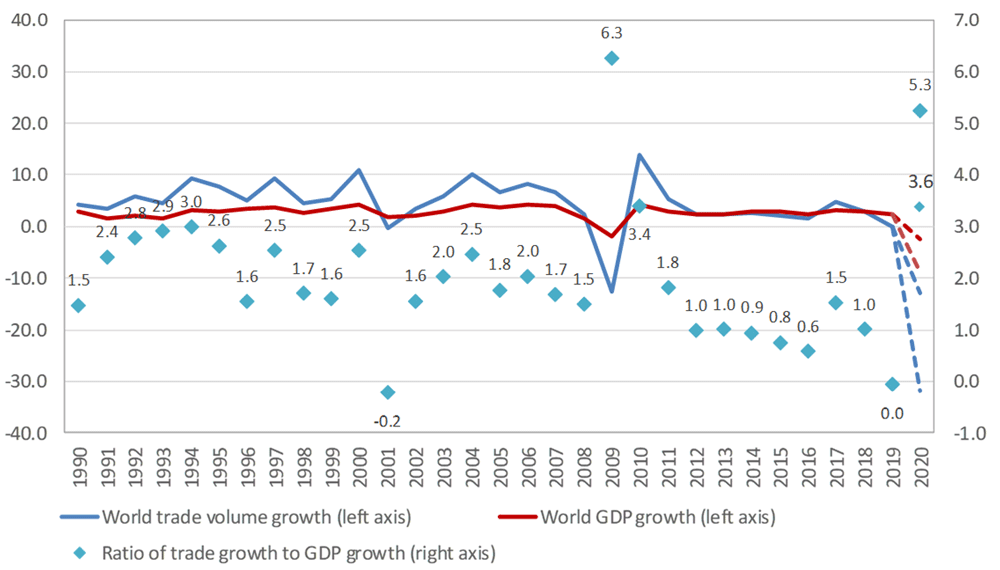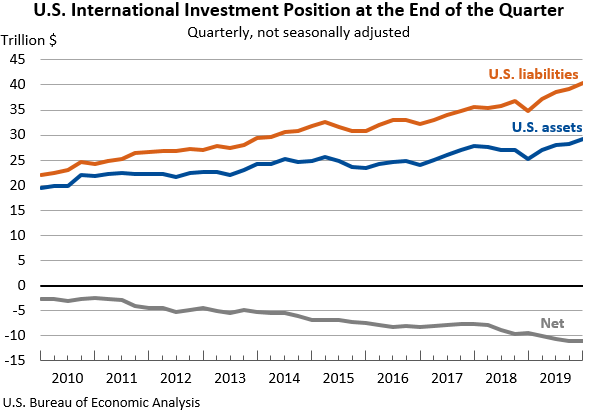As someone who has been running an academic journal for 34 years and who has college-age children, I've got a ringside seat for watching how higher education has been reacting to the COVID-19 pandemic. I'm having a love/hate reaction.
_______
Consider the rapid and near-universal move to online higher education. I've seen up close what this transition required of faculty who were reconstructing courses on the fly. Most faculty put considerable time into planning their regular courses in advance, because during the term, time is taken up with actual teaching and other responsibilities. But professors put in substantial amounts of time and energy to make the change to an online format, even though many of them would strongly prefer not to teach that way. Students had to make a fierce transition as well: changes in how classes met, changes in how information was transmitted, difficulties in coordinating study groups, and often a shift in the kinds of assignments being given. Many students also had to deal with these changes while also shifting their patterns of living or commuting. I love the earnestness and energy of the large effort made to keep classes going.
I also hate how quickly and easily colleges and universities switched to online education. These institutions spend considerable time and energy preaching to students and alumni about the virtues of the in-person education they usually deliver: for example, the value of in-person discussions with other students both in classrooms and around campus, the ease of access to professors and faculty, the importance of access to a broad array of activities, clubs, and cultural options, and so on. Academic departments emphasize the that oh-so-important junior seminar, or that capstone laboratory science project for the senior major, or the upgrade to college-level writing skills in a first-year seminar.
But all of those interactions that sounded so important--and indeed, were a main part of the reason for attending college in the first place--were jettisoned within a couple of weeks, and quickly replaced with online classes. I'm not aware of a single college or university which announced: "We can't deliver the education we promised. We feel terribly about that. But we can't do it. We'll try to figure out how to give you some partial credit for what you've done. We'll see you next fall, or whenever we can meet in person again." Pretty much every institution of higher education was apparently comfortable in saying: "Not ideal, but we can just sub in an online course constructed in the last few days, and maybe switch over to pass/fail grading, to make sure you get your college credits." Some schools that operate on a quarter system (Stanford is a prominent example) will be running an entire on-line term.
You might respond: Well, what else could they do? After all, they couldn't just cut off the term in the middle, right? Well, it would have been a logistical nightmare, of course. And there would have been enormous pressure to refund large chunks of tuition payments. But imagine if the pandemic had arrived 30 years ago, pre-internet, when the only alternative would have been long-distance learning delivered via cable TV and physical mailboxes. In that situation, the academic term would just have had to end, right? And alternatives would then have needed to be worked out.
I have an uncomfortable sense that when the twin specters of students not being on-track for an on-time graduation and the possibility of tuition refunds started hovering over the conversation, all those elements of in-person higher education about which college faculty and presidents so often wax rhapsodic (especially when asking alumni for donation) became expendable very quickly. And now that the traditionally in-person institutions of higher education have all agreed to dance with the genie of online education (and to charge full tuition for doing so), explaining why that genie should go back in the bottle may be harder than they think.
___________
As another example, the pandemic as a subject has rapidly attracted the attention of many professors across an array of hard sciences, social sciences, and humanities. I genuinely love the eagerness of so many researchers to step up and tackle a new subject, and to try to make whatever contribution they can to addressing some part of the problem. One of the joys of academic life is to ask a faculty member: "What are you working on now?" Then watch their eyes light up.
One undervalued aspect of higher education, it seems to me, is that there is a large group of experts in reserve with the flexibility to mobilize themselves toward society's immediate problems. Indeed, when I think about exploring the existing options for dealing with the pandemic and finding new ones, my confidence is almost entirely with semi-organized welter of the research community--both academic and within companies--rather than with government officials talking big and threatening to take over or, heaven help us all, announcing a new commission.
I also hate the willingness of so many researchers to believe that in a month or two, they can become instant experts on difficult questions. Over the decades, I've seen this phenomenon of instant experts emerge a number of times. For example, in the early 1990s the instant experts suddenly knew all about the USSR and how it should reform itself. In 2008, many of the same instant experts supposedly knew all about the details of the US financial system, everything from housing mortgages to reverse repurchase agreements. Now, the instant experts have strong beliefs based on about 60 days of learning about the strengths and weaknesses of epidemiology studies, about supply chains and manufacturing practices for ventilators and masks, and about the operations of open air seafood markets and virology laboratories in Wuhan, China.
Just to be clear, I'm all for people as involved and thoughtful citizens trying to get better informed on lots of topics; indeed, I spend large chunks of my waking hours trying to do that. What bothers me about the instant experts is the lack of respect for those who have spent decades already learning about the subject where the instant experts are just now parachuting in, and the lack of humility from the instant experts about what they can contribute. It feels to me as if some academics have a psychological need, when a big issue arises, to run up the head of a the parade and declare that they are one of the "leaders."
So yes, if you are a researcher from whatever discipline who sees a chance to make a contribution to how society understands and addresses COVID-19, by all means go for it. But in many cases, it will be a better use of the time and expertise of researchers if they keep on with what they were already doing. After all, there are are other potentially infectious diseases lurking out there, along with all the other issues that seemed pretty important way back in early January 2020. Sometimes, the best social contribution you can make is to keep doing an A-level job of what you were already doing--and be ready for when that expertise is needed--instead of doing a C-level job at chasing the latest hot topic.
______________
Lots of colleges and universities have been reacting to shutdown of their campuses and the advent of online classes with stirring emails delivered in the "we are all in this together" spirit. I genuinely love this spirit. Many colleges and universities have tried as best they could, with energy and even a bit oif flair, to preserve a sense of continuity and community. Many of them sent home as many students as they could, but have also stepped up to provide shelter, food, and a safe living space for students who for whatever reason didn't have another place to go. As in many situations of stress, people are being generous is making allowances for each other, and in supporting each other.
But I also hate this talk of how all of us at a certain college or university are all in it together. We're not. For some of us, like permanent faculty and staff, this is one crazy semester in a decades-long career. However, we have job security and are very likely to keep on getting our full paychecks throughout 2020.
On the other side, lots of adjunct and temporary faculty are suddenly facing professional lives that are even more insecure. Many contract or temporary employees around colleges and universities have either lost their jobs already, or will do so soon. Many parents of students who are footing most of the bill for tuition, room, and board will not be getting steady paychecks. Instead, the parents are now paying tuition for what is often a highly diluted educational experience, and facing the uncertainty of whether they will be able to afford for their child to return to college in the fall.
For four-year undergraduate students, this crazy semester is one-eighth of their college career. For graduating seniors, and for those in one-year or two-year programs, the loss of this term will be the defining fact of their academic experience. About 3
0% of four-year college undergraduates normally drop out before their sophomore year; I wonder how many more will be dropping out this year. Students have taken out loans to pay the tuition for courses that ended up being on-line. Graduating students will need to figure out how to repay their loans as they enter what looks like a truly crappy labor market.
The burdens of the pandemic are quite unequally distributed, both in academia and through the rest of the economy.
___________________
There are arguably some times and places where if you don't have a clear-cut alternative to suggest, maybe it's time to shut up. The pandemic situation is without recent precedent, and academia (like everywhere else) is adjusting on the fly. I do not have alternatives to offer, But in academia's admirable surge of can-do spirit, this curmudgeon finds himself wanting to acknowledge and remember the tradeoffs and losses, too.















